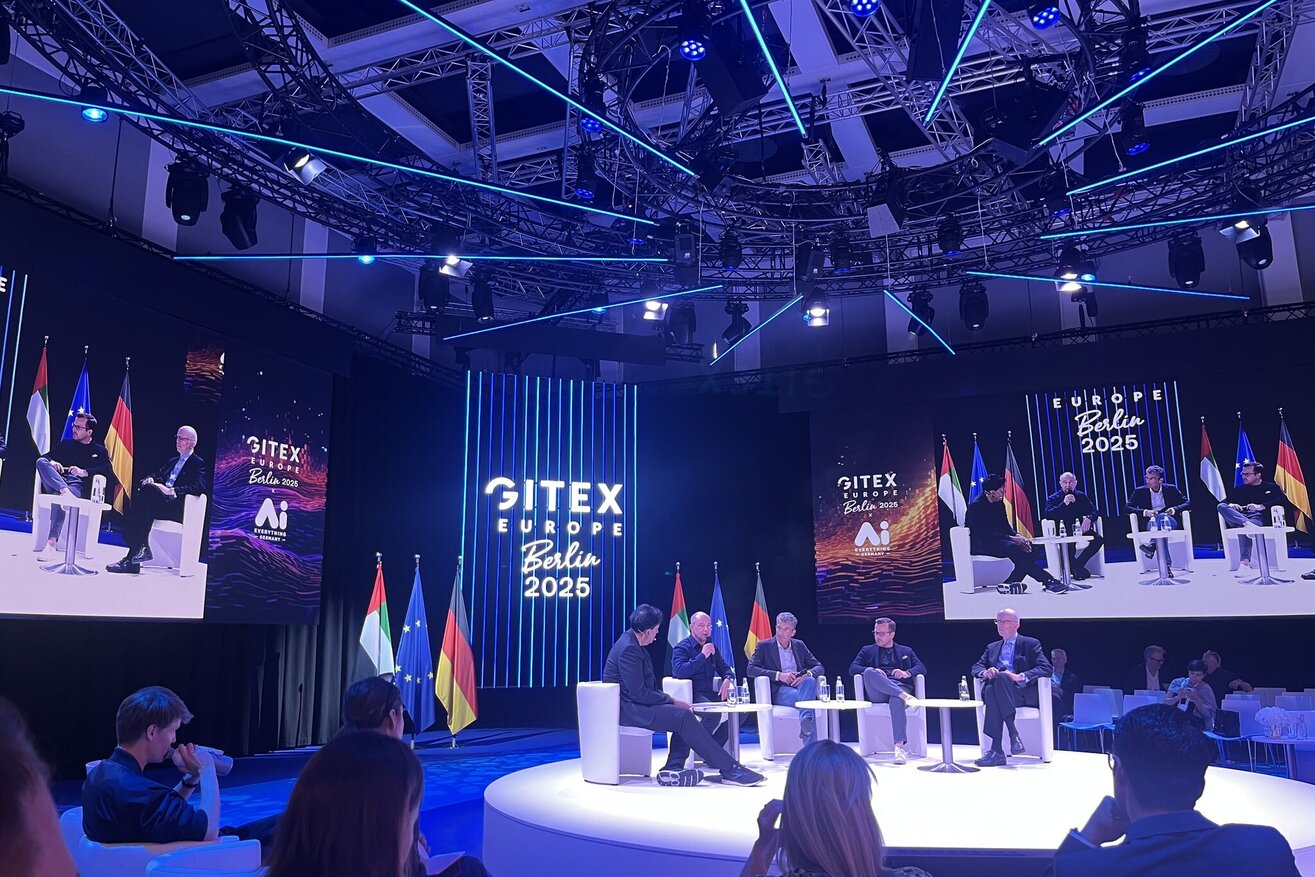GITEX Europe 2025: Reflections from Odgers on GITEX's European Debut

Berlin, May 20-22, 2025
Lily Russell and I arrived in Berlin just as GITEX opened its doors for the first time in Europe - and just one day after the UK and EU signed a landmark digital and cyber cooperation agreement. The timing was symbolic: a renewed willingness to collaborate across borders, as Europe confronts the scale, complexity, and urgency of AI.
Just weeks earlier, GITEX's home region - the UAE - had also re-entered the spotlight, announcing $200 billion in new U.S. technology and AI investment agreements. Add to that Microsoft’s $1.5 billion investment in UAE-based G42 and the announcement of Stargate UAE (a hyperscale data center complex backed by many of GITEX 2025’s attendees – G42, OpenAI, Microsoft, SoftBank, Oracle, and NVIDIA), and it’s clear that AI infrastructure is no longer simply a tech topic, it’s a geopolitical one.
Against that backdrop, GITEX Europe brought together over 1,400 exhibitors and 600 speakers, including tech giants such as AWS, IBM, and Equinix - all of whom were represented on the panel at our annual flagship Tech event in London - “Generative AI at Scale in the UK”. It felt like the beginning of a new conversation: one not just about AI models and regulation, but about whether the very systems we rely on - power grids, data centers, cloud networks - can cope with what’s coming next.
1. Power, Compute & the Energy Burden of AI
- Geoffrey Hinton - the “Godfather of AI” – opened the conference with a warning that large‑scale AI could trigger an “energy crisis,” with estimates that AI could demand more energy than all of Japan by 2030.
- The shift from AC to DC grids, PPAs (Power Purchase Agreements), and AI-optimised cooling were all key themes.
- Companies like Skeleton Technologies showcased innovations in energy storage using supercapacitors and graphene, designed to stabilise energy spikes caused by AI workloads.
2. From Research to Scale: The European Bottleneck
- Europe excels in AI research and talent - but struggles with execution and scale. This message was clear from sessions with DFKI (the German Research Center for Artificial Intelligence) and the European Commission.
- Speakers pointed to a “commercialisation gap” driven by:
- Inadequate cloud and compute capacity
- Fragmented public procurement
- Insufficient support for scaleups moving beyond Series A
- One clear takeaway: Europe must improve its Achilles heel of moving beyond ideas to scale, in order to regain lost ground in the global AI race.
3. Sovereignty, Trust & Cross-Border Investment
- UK–EU alignment: In the wake of a landmark security and digital cooperation agreement, sessions at GITEX referenced opportunities for shared investments in compute and energy resilience across borders – as Europe seeks greater digital sovereignty.
- AWS and IBM both emphasized the importance of sovereign cloud strategies, as did European policymakers concerned about U.S. - China infrastructure dominance. AWS spotlighted its European Sovereign Cloud and highlighted real-world integration examples from BMW and Zalando - signalling secure, compliant infrastructure as a key market differentiator.
- Meanwhile, the UAE’s bold moves - from G42’s growing global footprint to its GITEX pavilion featuring autonomous policing, e-ID systems, and data governance demos - show a nation positioning itself as a digital infrastructure superpower.
Not forgetting the humanoid robots, drone demos and sky-diving simulators, as well as post conference gatherings with existing and new customers, all of which added to the spectacle and success of GITEX Europe 2025!
Next Steps: AI Infrastructure Summit
Our 2026 event will explore this critical question: “Can our infrastructure sustain the AI revolution?”
With a pan-European lens, we’ll bring together voices from:
- Technology – to explore what’s happening at scale, from hyperscalers to high-growth innovators
- AI Infrastructure – to unpack the challenges around compute, storage, latency, and data sovereignty
- Energy – to examine grid capacity, sustainability strategies, and emerging solutions for powering AI at scale
- Government – to outline the regulatory landscape, cross-border cooperation, and public investment priorities
We can no longer talk about AI in isolation. This is a cross-border, multi-sector and functionally agnostic conversation. The next wave of AI innovation will be shaped by those who can build, power, and govern the infrastructure it depends on.






